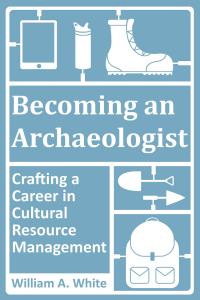 The pain was so great, it took me a few days to digest what happened last week before I could write.
The pain was so great, it took me a few days to digest what happened last week before I could write.
The events that went down in Charlottesville have been on many minds. That tends to happen when a massive neo-Nazi and Klu Klux Klan rally disguised as a conservative tiki party turns bloody. The violence is what makes the Charlottesville Protest/Rally and Counterprotest memorable; however, the true tragedy is the fact that thousands of Americans still believe in inequality, segregation, subjugation, and racism.
Even though we fought wars against slavery and the Nazis, it seems like some people never learned that discrimination is wrong.
The alt-right legions that descended upon the University of Virginia campus say they were there to protest the removal of a monument to Robert E. Lee—leader of the Confederate Army during the Civil War. They believe their “protest” was another step in their never-ending quest to reclaim White heritage. To them, removing the statue is an effort to eliminate another part of their heritage; they deem the strategies they use to save this heritage innocent—even when it results in deaths.
We all know that isn’t what this was really about. The enraged white nationalist tinge of the whole thing pretty much gives away the fact that it was a white supremacist rally. But, this brings up a lot of questions for CRMers who are paid to determine the significance of cultural resources like these that can be used as a source of a people’s heritage including the heritage of the Confederacy, slavery, racism, and white supremacy.
Do they have the right to force us to keep Confederate memorials? Is it racist to keep the statue? What about taking it down? Is that another way of sanitizing this nation’s white supremacist history? Who gets to decide? The people of Charlottesville who proposed removing it or the cadre of supremacists who descended from across the country to stop that from happening? How does CRM play a role in this saga?
Whose heritage gets preserved?
Heritage conservation is what cultural resource management is supposed to be about. The first two clauses of the original National Historic Preservation Act (NHPA) of 1966 state, “…the spirit and direction of the Nation are founded upon and reflected in its historic past…(and)…that the historical and cultural traditions of the Nation should be preserved as a living part of our community life and development in order to give a sense of orientation to the American people…” This sounds to me like the NHPA was dedicated to preserving tangible assets of American heritage because it helps us figure out who we are.
Our current state suggests we, as a nation, have a problem when we have to face difficult and emotional aspects of American history like slavery, racism, and white supremacy. It is known that the history of Native Americans, African Americans, Hispanic Americans, Asian Americans, Jewish Americans, GLBTQ Americans, and most European immigrant groups is not rosy. As non-“White” people, this is part of the heritage that we fight to reclaim on a daily basis. We hope that learning about the discrimination-related violence that happened to us will prevent it from happening again.
In part, it is the success of the efforts of non-supremacists that has caused the vitriolic spasm of white supremacy that we are facing today. Their past has been complicated because we have spent the better part of the 20th century fighting for the recognition of non-Whites. They’re losing control of the narrative of America’s past. This is why they think we’re “taking over their country.”
Another part of this is rooted in the mechanics of structural racism, which is a fact of life in the United States. Our system was designed to benefit: 1) the wealthy, many of whom are European American, 2) White people [i.e. those who conform to an unstated criteria of whiteness that includes white supremacy to varying degrees], and 3) everybody else [i.e. those who cannot or will not comply with the tenets of whiteness]. (NOTE: This sh*t is complicated. Email me or write a comment below if you want to know more about whiteness or America’s racial history. It’s way more than I can address in this blog post.)
Unavoidably, this is also part of the CRM industry. Because most cultural resource management archaeology is overwhelmingly practiced by persons of European descent and primarily functions out of the United States and Europe, there is no way to separate its practitioners from nationalism, colonialism, and whiteness. I’ve written on race, racism, and American archaeology before. Check it out:
Are archaeologists racist, Part I
Are archaeologists racist, Part II
Archaeology, Structural Racism, and the Seahawks: Musings on #SHA2015
I approach structural racism and archaeology from an anti-racism advocacy standpoint. I believe it is our duty as anthropologists and archaeologists to stand against racism. My view has also been expressed on Episode 117 of the CRM Archaeology Podcast. I also believe this kind of anti-racism work has to be ongoing, lifelong, and take place in the present. We have a chance to make a stand whenever we encounter racism. We don’t have to wait until atrocities like Charlottesville happen. We can address racist jokes, perpetuating stereotypes, and other “microaggressions” every time we encounter them.
We can also use our privilege as businesspeople, scholars, and cultural resource managers to change narratives about the past. Another way we can address racism is by continually planting the seed of equality in the minds of those who aren’t really thinking about how race effects their worldview. Learning about other people and the truth about yours is a major way stereotypes can be broken down. Our work sheds light on how the past actually was, which weakens longstanding narratives that are central to believing in The American Way. Step-by-step is how we can build a large network of anti-racism advocates that can stem the tide of the growing supremacist movement.
Supremacists don’t like us showing them how the past really was. They believe we are deleting them from the past but our work is actually democratizing the past by adding other narratives to the dominant one. Every prehistoric site, slave quarters, Chinese mining camp, and immigrant tenement adds to what is known about American history. It all takes place within the sphere of economic subjugation that is at the heart of capitalism in the New World. In capitalism, there are a few winners and a lot of losers. The fact that white supremacists are losing ground socioeconomically is one reason why they’re striking out. They’re afraid and they have reason to be. Life expectancy for uneducated, middle-aged White people is falling. As the American economy changes, they’re finding themselves underemployed or unemployed and facing the ravages of a drug and alcohol epidemic with little to no healthcare. This isn’t supposed to happen to them in “their” country (i.e. the one where Whites are heroes and “the others” are simply just there). Our discoveries in CRM show them that other people have had even more difficult lives, which they see as something that steals sympathy from their plight. Learning more about non-Whites is seen as “us” pushing “them” out of the spotlight when it’s really just us showing them how many other people were getting screwed by elites.
American history was made to venerate the kinds of people who are on the Dollar Bill. The rallies by supremacists shows just how well they’ve drunk the Kool Aid; how much they’ve been tricked by the architects of history: America’s elites. We can chisel down a little of the vitriol by showing how non-White people articulated with poor and uneducated Whites who have been constantly used as a bulwark to support wealthy elites in the United States. How, although the sufferings by non-Whites was horrific, racism prevented poor Whites from connecting with minorities in a manner that they could have used collective action to push back against capitalism’s leaders. Poor and uneducated Whites were made to suffer because they have been brainwashed into believing they have nothing in common with non-Whites. Rather than joining with other oppressed people, they have stood alone and are currently reaping the rewards of this isolation.
 How do Germans deal with their recent past?
How do Germans deal with their recent past?
No society has a completely innocent past. Blood has been spilled in every country, in every era. It continues into the present. But, perhaps, no Western society in recent memory has as much to atone for as citizens of the German Republic.
For Germany, World War I was bad. World War II was even worse because of the horrors of the Holocaust. Adolph Hitler’s rise to power, leadership of Germany, and the Nazi party is considered a textbook example of how modern media, industry, and nationalism can converge to create brutal devastation. But, many German citizens were as shocked about what happened during WWII as the rest of the world was. Many could not believe the whispers of atrocities were true and that they were carried out by their fellow Germans.
My wife’s grandmother survived the war in Berlin. A Dutch woman who married a German engineer, my grandmother-in-law kept her five children alive during the runup to the war, through its bloody course, and immigrated to Canada after its conclusion.
She once told me that the creeping spread of Nazism came swiftly over the course of a few years: “First, we laughed at the Nazis as a ridiculous aberration. Then, they won elections and we were surprised, but not yet afraid. Then, the Reichstag Fire happened. And, marital law. Before we knew it, Jewish parents stopped dropping their children off at elementary school. We were afraid. So afraid we stopped talking about it because we were worried they’d come for us too.”
The German people have decided not to repeat this past. Following the war, they have been explicit at talking about the Holocaust to their children. Schoolchildren in Germany are taught about this bloody part of their heritage in a number of different ways: Visiting the death camps, having Holocaust survivors speak in schools, and through the constriction of monuments. From an early age, Germans are told the truth. Over years of repeated discussion, Germans become aware of what their forebears did.
https://www.economist.com/blogs/kaffeeklatsch/2017/08/charlottesville-context
http://www.slate.com/blogs/quora/2014/02/06/how_do_german_students_learn_about_the_holocaust.html
The process of addressing horrible memories head-on is a way today’s German people have become completely anti-Nazi. Making Nazi displays is illegal. Saying anything remotely like what Hitler used to say is considered socially immoral. White nationalists are publicly shunned.
Students are not shamed for what their ancestors did. Descendants of Nazis are not discriminated against or considered lesser citizens. Instead, society does its best to reeducate all its children, including those with Nazi heritage, about what was done by the entire society. Aside from the few Nazis still alive today, it is understood that nobody today is to be blamed for what their great, great grandparents did.
We should take a lesson from the German playbook
America should take a lesson from the Germans. The United States has a historical dirty laundry basket heaped higher than the former Twin Towers. Slavery, Native American genocide, Japanese internment, Immigrant-bashing, the Ghost of Tom Joad, the Triangle Shirtwaste Factory, Stonewall—they are among the many atrocities that we, as a country, have yet to fully atone for. These are as much a part of our collective history as “The American Dream.” The only way we can move forward is by addressing these histories head-on, just like the Germans and the Holocaust.
When it comes to cultural resource management, we can do a lot more than just share photos of Indiana Jones punching an actor pretending to be a Nazi.
What, specifically, can we do to stem the rising tide of white nationalism?
Events like Charlottesville make it seem like white nationalists, supremacists, and neo-Nazis are impossible to sway. How can we approach anyone that angry? It will be difficult to sway older supremacists, but younger ones, especially those who have not yet gone to college, can be shown how the collective heritage of the United States includes both the Confederacy and abolitionism; Indian genocide and thousands of years of Native American civilizations; slavery and Black Power. Here are some of the many things we can do to fight back as CRMers and scholars:
1) Recognize our own privilege—Even though we aren’t all rich or White, CRM archaeologists are privileged. We have degrees. Most of us are not facing the challenges of uneducated Americans. We also have access to first-hand knowledge about the past. We know some sh*t and have the potential to change the narrative supremacists need to survive. With privilege comes responsibility. We need to own our privilege and help protect heritage for all (even the heritage of white supremacy).
2) Tell the world about our discoveries—Archaeology == human history. Humans == all of us. The story of America is ours, for better or worse. We need to tell the world about what we find.
3) Stamp out racism among archaeologists—Racist jokes aren’t funny. That uncle’s behavior at Thanksgiving? It’s not cool. Call them out, in a socially-acceptable way, whenever you interact with a racist.
4) Keep complicating the dominating narrative—Your discoveries make it hard to be down with supremacy. Keep finding stuff that makes supremacists look stupid.
5) Democratization means diversification—It’s not enough to get more non-White archaeologists into the field (Although, given the overwhelming whiteness of archaeology, that would be an excellent start). We need to get more publics to contribute to our work. For CRMers, this means trying to find collaborators in order to get real consultation. You will have to do this work BEFORE you start writing a proposal to work on a Native American’s traditional use area or in a Black neighborhood. You will have to be a community citizen BEFORE you can use your position to your advantage.
Cultural resource managers have a social responsibility because our job is to make powerful determinations about whose heritage is “significant” and whose isn’t. We have spent more than 50 years using the NRHP to add to the country’s historical narrative. We have helped give a voice to those who had been silenced by preserving and studying sites relevant to their heritage. The recent supremacist uprising has been partially motivated by the fact that our work has complicated the history they depend upon for survival. I think we should keep up this work. In fact, we should amplify our voices.
As for the question of whether or not we should keep Confederate memorials, that decision should be left to the communities that have them. Many communities have decided to get rid of them. This is partially because they embrace a diverse interpretation of the past. Others have decided to fight to keep the ones they already have. I ask cultural resource management archaeologists in those communities that have Confederate monuments to speak up on behalf of anti-racism and forging a new diverse and complicated history. Educate the youth in the former Confederacy about what really happened in the war, during slavery, and how that continues to shape their communities. Tell them what you know about “the others” because most of the White people in these areas have never thought about what it would be like to be non-White. Cultivate a history that shows how racism and violence has been used to divide us as a people.
Write a comment below or send me an email.
 Having trouble finding work in cultural resource management archaeology? Still blindly mailing out resumes and waiting for a response? Has your archaeology career plateaued and you don’t know what to do about it? Download a copy of the new book “Becoming an Archaeologist: Crafting a Career in Cultural Resource Management” Click here to learn more.
Having trouble finding work in cultural resource management archaeology? Still blindly mailing out resumes and waiting for a response? Has your archaeology career plateaued and you don’t know what to do about it? Download a copy of the new book “Becoming an Archaeologist: Crafting a Career in Cultural Resource Management” Click here to learn more.
Check out Succinct Research’s contribution to Blogging Archaeology. Full of amazing information about how blogging is revolutionizing archaeology publishing. For a limited time you can GRAB A COPY FOR FREE!!!! Click Here
 “Resume-Writing for Archaeologists” is now available on Amazon.com. Click Here and get detailed instructions on how you can land a job in CRM archaeology today!
“Resume-Writing for Archaeologists” is now available on Amazon.com. Click Here and get detailed instructions on how you can land a job in CRM archaeology today!
 Small Archaeology Project Management is now on the Kindle Store. Over 300 copies were sold in the first month! Click Here and see what the buzz is all about.
Small Archaeology Project Management is now on the Kindle Store. Over 300 copies were sold in the first month! Click Here and see what the buzz is all about.
Join the Succinct Research email list and receive additional information on the CRM and heritage conservation field.
Get killer information about the CRM archaeology industry and historic preservation.



